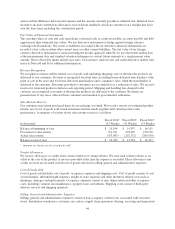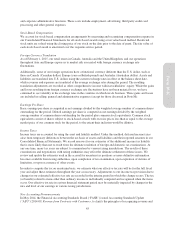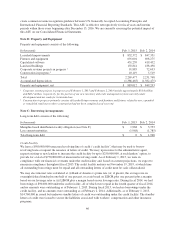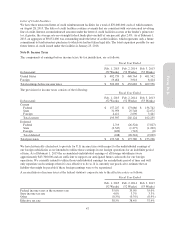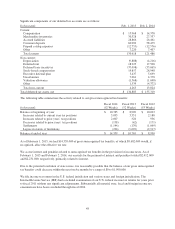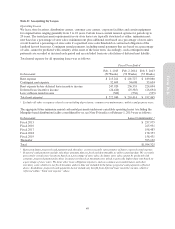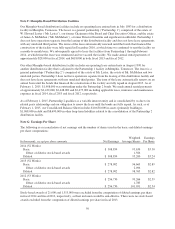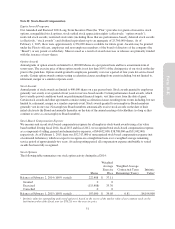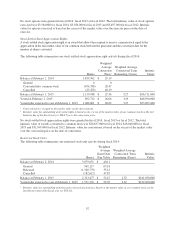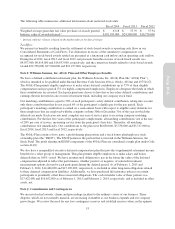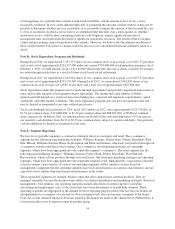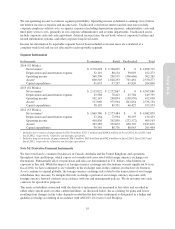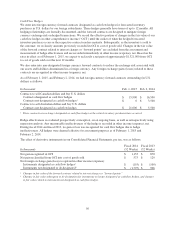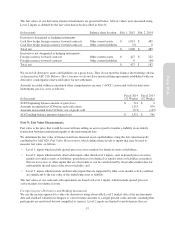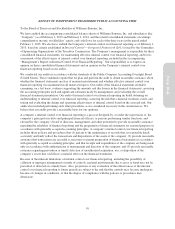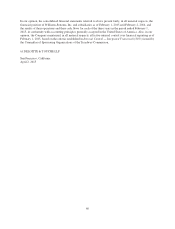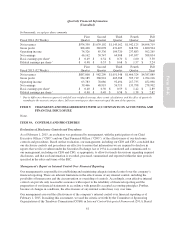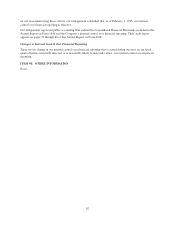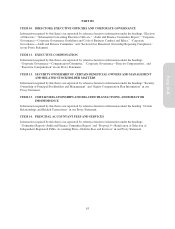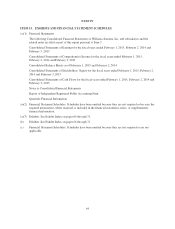Pottery Barn 2014 Annual Report Download - page 68
Download and view the complete annual report
Please find page 68 of the 2014 Pottery Barn annual report below. You can navigate through the pages in the report by either clicking on the pages listed below, or by using the keyword search tool below to find specific information within the annual report.of management, it is probable that a matter would result in liability, and the amount of loss, if any, can be
reasonably estimated. In view of the inherent difficulty of predicting the outcome of these matters, it may not be
possible to determine whether any loss is probable or to reasonably estimate the amount of the loss until the case
is close to resolution, in which case no reserve is established until that time. Any claims against us, whether
meritorious or not, could be time consuming, result in costly litigation, require significant amounts of
management time and result in the diversion of significant operational resources. The results of these lawsuits,
claims and proceedings cannot be predicted with certainty. However, we believe that the ultimate resolution of
these current matters will not have a material adverse effect on our consolidated financial statements taken as a
whole.
Note K: Stock Repurchase Program and Dividends
During fiscal 2014, we repurchased 3,331,557 shares of our common stock at an average cost of $67.35 per share
and a total cost of approximately $224,377,000 under our current $750,000,000 stock repurchase program. As of
February 1, 2015, we held treasury stock of $2,140,000 which represents the cost of shares available for issuance
in certain foreign jurisdictions as a result of future stock-based award settlements.
During fiscal 2013, we repurchased 4,344,962 shares of our common stock at an average cost of $55.07 per share
and a total cost of approximately $239,274,000. During fiscal 2012, we repurchased 3,962,034 shares of our
common stock at an average cost of $39.14 per share and a total cost of approximately $155,080,000.
Stock repurchases under this program may be made through open market and privately negotiated transactions at
times and in such amounts as management deems appropriate. The timing and actual number of shares
repurchased will depend on a variety of factors including price, corporate and regulatory requirements, capital
availability and other market conditions. This stock repurchase program does not have an expiration date and
may be limited or terminated at any time without prior notice.
Total cash dividends declared in fiscal 2014, fiscal 2013 and fiscal 2012, were approximately $125,378,000, or
$1.32 per common share, $121,688,000, or $1.24 per common share and $88,452,000, or $0.88 per common
share, respectively. In March 2015, we announced that our Board of Directors had authorized a 6% increase in
our quarterly cash dividend, from $0.33 to $0.35 per common share, subject to capital availability. Our quarterly
cash dividend may be limited or terminated at any time.
Note L: Segment Reporting
We have two reportable segments, e-commerce (formerly direct-to-customer) and retail. The e-commerce
segment has the following merchandising strategies: Williams-Sonoma, Pottery Barn, Pottery Barn Kids, West
Elm, PBteen, Williams-Sonoma Home, Rejuvenation and Mark and Graham, which sell our products through our
e-commerce websites and direct-mail catalogs. Our e-commerce merchandising strategies are operating
segments, which have been aggregated into one reportable segment, e-commerce. The retail segment has the
following merchandising strategies: Williams-Sonoma, Pottery Barn, Pottery Barn Kids, West Elm and
Rejuvenation, which sell our products through our retail stores. Our retail merchandising strategies are operating
segments, which have been aggregated into one reportable segment, retail. Management’s expectation is that the
overall economic characteristics of each of our operating segments will be similar over time based on
management’s judgment that the operating segments have had similar historical economic characteristics and are
expected to have similar long-term financial performance in the future.
These reportable segments are strategic business units that offer similar home-centered products. They are
managed separately because the business units utilize two distinct distribution and marketing strategies. Based on
management’s best estimate, our operating segments include allocations of certain expenses, including
advertising and employment costs, to the extent they have been determined to benefit both channels. These
operating segments are aggregated at the channel level for reporting purposes due to the fact that our brands are
interdependent for economies of scale and we do not maintain fully allocated income statements at the brand
level. As a result, material financial decisions related to the brands are made at the channel level. Furthermore, it
is not practicable for us to report revenue by product group.
54


